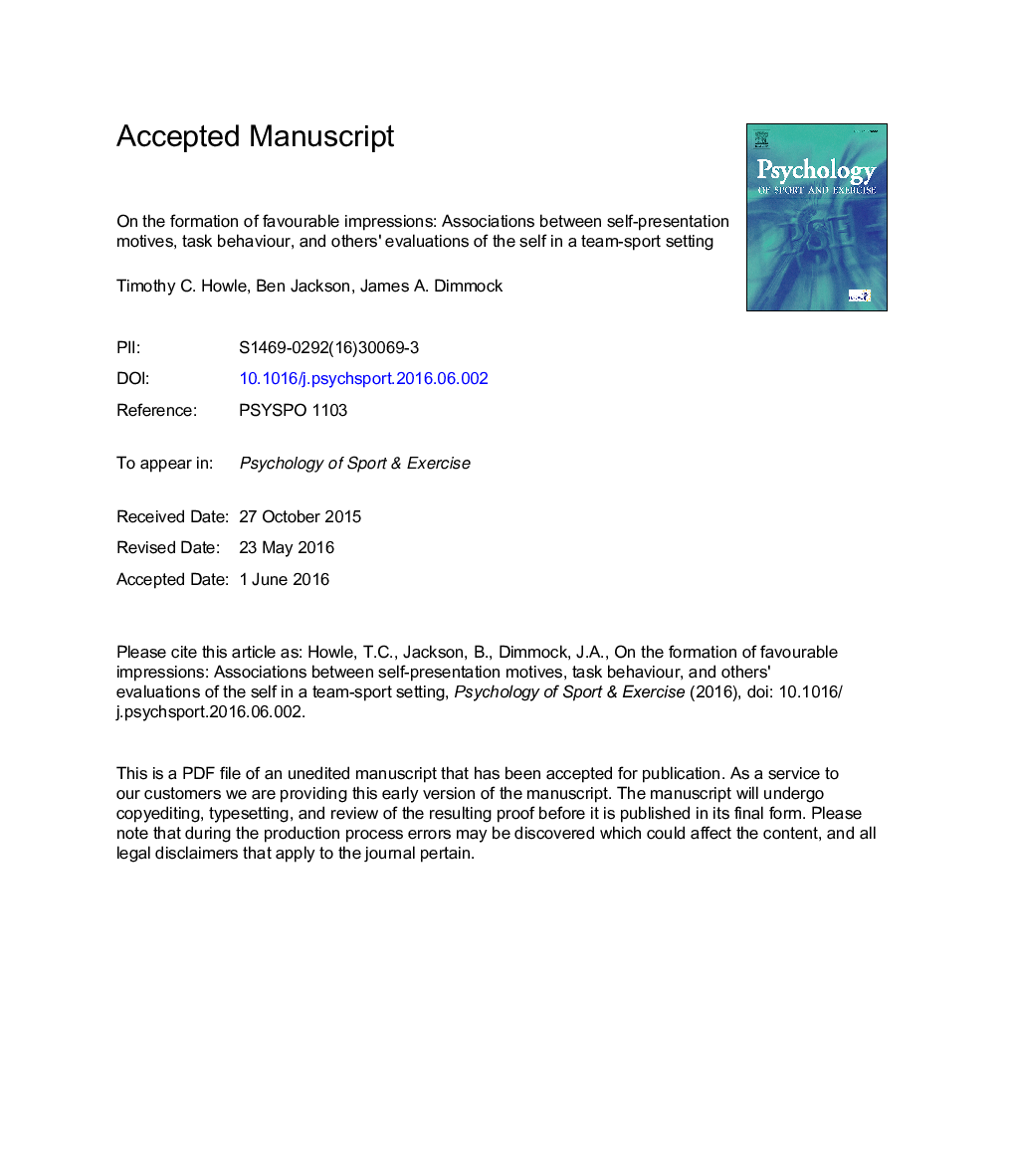| Article ID | Journal | Published Year | Pages | File Type |
|---|---|---|---|---|
| 7253214 | Psychology of Sport and Exercise | 2016 | 32 Pages |
Abstract
Individuals adopt self-presentation motives in sport settings to shape others' perceptions of the self. However, the effectiveness of different types of motives in shaping favourable evaluations has not been explored. We examined pathways from 2Â ÃÂ 2 self-presentation motives to others' evaluative perceptions via task behaviour. Participants (NÂ =Â 112) reported their self-presentation motives immediately prior to a basketball game, had their behaviours (i.e., shots, time spent on the sideline) recorded via video during the game, then completed agentic (e.g., competent) and communal (e.g., supportive) ratings of their teammates following the game. Structural equation modeling revealed positive pathways from acquisitive motives to behaviour (i.e., acquisitive agency) and favourable evaluations (i.e., acquisitive-agency and -communion). Negative pathways were observed from protective communion to behaviour and others' evaluations. The findings indicate that different types of self-presentation motives may differ in their impression management effectiveness and may either promote or suppress task behaviour.
Related Topics
Health Sciences
Medicine and Dentistry
Orthopedics, Sports Medicine and Rehabilitation
Authors
Timothy C. Howle, Ben Jackson, James A. Dimmock,
